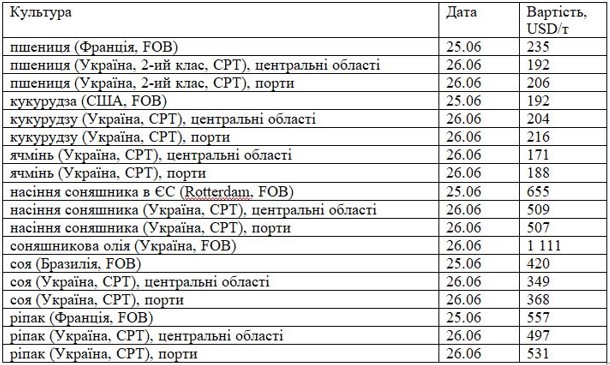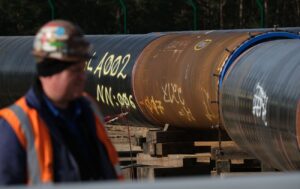
A sharp rise in global RAM (DRAM) prices and the possible end of Apple’s preferential contracts with key suppliers Samsung and SK Hynix in 2026 could lead to higher prices for iPhones, Macs, and other Apple devices. However, Apple itself has not yet announced any price increases, and expert estimates remain forecasts.
According to industry sources, Apple’s long-term DRAM supply agreements are nearing their end, and as early as January 2026, the company may be forced to pay Samsung and SK Hynix significantly higher prices for memory. This is reported, in particular, by Wccftech, noting that the bargaining position of memory manufacturers has strengthened amid a global shortage and a boom in demand from AI data centers.
The DRAM market is already experiencing a massive price rally. According to TrendForce, the cost of advanced memory for 2025 has increased by approximately 50%, and in the fourth quarter, additional growth of about 30% is expected, with a possible further increase of 20% in early 2026. Taken together, this could lead to a doubling of prices for high-performance memory in a relatively short period of time.
Separately, Reuters reported that Samsung raised its contract prices for 32GB DDR5 modules to $239 at the end of 2025, up from $149 in September — an increase of nearly 60% amid worsening shortages and a shift in supply toward the server and AI segments.
Analysts note that Apple is traditionally protected from short-term price spikes thanks to large long-term contracts and purchase volumes. According to Macworld, it is these agreements that have so far allowed the company to keep its internal memory costs under control, despite rising prices on the open market. However, as these contracts expire and suppliers move to shorter-term and more expensive deals, pressure on device costs will increase.
Against this backdrop, some research and industry resources predict that in 2026, smartphone and laptop manufacturers, including Apple, will be faced with a choice: either raise retail prices, reduce the amount of RAM in basic configurations, or accept lower margins. A number of analytical reviews are already warning of a possible increase in the cost of smartphones and PCs in 2026 due to a shortage of memory and an increase in its cost.
At the same time, there have been no official statements from Apple about a planned increase in product prices in connection with the situation on the DRAM market. The industry media experts surveyed emphasize that the final decision will depend on the company’s strategy: part of the cost increase may be offset by more expensive memory upgrades, part by a selective revision of prices for new models, and part by internal reserves and optimization.

Apartment prices in Serbia in the second quarter of 2025 were 5.78% higher than a year earlier; compared to the first quarter, the increase was 1.36%, according to the statistics agency. In the old housing stock, annual growth reached 5.89%, and in new buildings, 5.57%.
According to Eurostat data for the same period, the average growth in housing prices in the EU was 5.4% year-on-year, with significant variations: from a decline of 1.33% in Finland to growth of 17.23% in Portugal, 15.51% in Bulgaria, and 15.12% in Hungary.
The main trends in the real estate market in Serbia at the moment are as follows:
1) The balance of demand is shifting in favor of fully finished apartments and energy-efficient new buildings in large agglomerations, primarily in Belgrade and Novi Sad.
2) The price gap between new buildings and secondary housing remains significant, but the rates of increase are similar — 5.57% versus 5.89% year-on-year, indicating broad demand support for both segments.
3) The external background is neutral-positive: Serbian dynamics are close to the European average, but without the overheating characteristic of a number of EU markets.
Vera Yegorova-Tolsta, director of the Vidovstan real estate agency (Belgrade), commented on the market situation for Serbian Economist:
“We see sustained interest in well-located properties with clear operating economics — these are new business-class buildings and liquid secondary properties with reasonable utility costs. Buyers have become more careful in comparing options in terms of energy efficiency and management infrastructure, which supports quality projects even at a higher price per square meter. In Belgrade, offers that meet these criteria continue to sell quickly, thanks to local demand and buyers moving from other cities.”
Given the current trajectory of interest rates and household incomes, the baseline scenario is moderate price growth within the limits of inflation plus a premium for location and energy efficiency.
Risk factors for prices include a slowdown in mortgage lending and rising developer costs; support factors include limited supply in prime locations and a moderate influx of internal migrants to the Belgrade agglomeration.

Ukrainian cheese makers traditionally expect sales to pick up in the fall, but in 2025 they plan to raise prices by an estimated 5%, which has led to an increase in sales in the cheapest segment—cheese products, according to the industry analytical agency Infagro.
“This year, seasonal hopes may be dashed by the price situation: against the backdrop of cheaper cheese in the EU (down 8% in August), domestic producers, on the contrary, plan to raise prices by approximately 5%. The rise in the price of Ukrainian cheese is already having an impact: imports are growing, and cheese products are increasingly occupying store shelves—a cheaper alternative that is rapidly gaining popularity among consumers,” analysts noted.
Experts emphasized that due to its lower cost, cheese products are currently showing the most dynamic sales growth. For many buyers, these products are becoming the only affordable option amid the constant rise in the price of “real” cheese.
“In such conditions, cheese makers are forced to share the market not only with imports, but also with domestic competitors who are betting on a more affordable format. The trend of growing consumption of cheese products is expected to continue,” Infagro concluded.

Let’s track the prices as of the end of June 2025 for the main grain and oil crops exported from Ukraine, as well as fluctuations in their value on the world market.
The price of wheat (France, FOB) was 235 USD/t, according to market operators on June 25, 2025. This is 1 USD less than last week, 6 USD more than the previous month, and 3 USD more than the previous year. The price of wheat (Ukraine, 2nd grade, CPT) for the central regions (June 26) was 192 USD/t. This figure remained unchanged during the week, decreased by 15 USD over the month, and increased by 45 USD over the year. For ports, the amount was 206 USD/t, which is 3 USD less than a week ago and 18 USD less than a month ago, but 19 USD more than a year ago.
According to the International Grains Council, the price of corn (USA, FOB) as of June 25 was 192 USD/t. This is USD 8 less per week and USD 16 less per month, but USD 3 more per year. The price of corn (Ukraine, CPT) on June 26 for the central regions was USD 204/t. It did not change during the week, but decreased by USD 4 per month and increased by USD 73 per year. For ports, it was 216 USD/t (also unchanged from the previous week, down 16 USD from the previous month, and up 3 USD from 2024).
“Let’s pay attention to the forecast for global corn production in 2025/26 MY. It has been reduced by 1 million tons to 1,276 million tons, compared to 1,225 million tons in the current season. However, the forecast for global consumption has been increased by 1 million tons to 1,269 million tons. Therefore, the estimate of final corn stocks has been lowered by 2 million tons (to 282 million tons). This will exceed the current season’s figure by 7 million tons,” said grain market analyst Alexander Korenitsyn.
As for the price of barley (France, FOB) as of June 25, it stood at USD 216/t. This is USD 6 less than a week ago and USD 5 less than a month ago, but USD 11 more than a year ago. Let’s analyze the price changes for barley (Ukraine, CPT). As of June 26, the price was (central regions) – 171 USD/t. This is 3 USD more per week and 46 USD more per year, but 30 USD less per month. For ports, the price is 188 USD/t, which is 6 USD more per week, 40 USD more per year, but 2 USD less per month.
Prices for major grain and oil crops exported from Ukraine, end of June 2025

According to Oleksandr Serhiyovych Korenitsyn, the price of sunflower seeds in the EU (Rotterdam, FOB) as of June 25 was USD 655/t. The changes are as follows: +5 USD per week, -14 USD per month, and +170 USD per year. The price of sunflower seeds (Ukraine, CPT) on June 26 (central regions) was 509 USD/t. This is 8 USD less per week and 16 USD less per month, but 109 USD was added to the price per year. For ports, the cost is 507 USD/t. The price fell by 6 USD per week and rose by 9 USD per month and 148 USD per year. A ton of sunflower oil (Ukraine, FOB) costs 1,111 USD as of June 26.
The cost increased by $8 per week and by the same amount per month.
The calculation of price fluctuations for soybeans is based on its cost as of June 25 (Brazil, FOB) – $420/t. It decreased by $10 per week and by $16 per year, but increased by $15 per month.
“The price of soybeans (Ukraine, CPT) in the central regions was 349 USD/t on June 26, which is 8 USD less than a week ago, 4 USD less than a month ago, and 23 USD less than in 2024. The price for ports is 368 USD/t. It decreased by 14 USD, 13 USD, and 10 USD over the week, month, and year, respectively,” said analyst Alexander Korenitsyn.
The price of rapeseed (France, FOB) on June 25 was $557/t. Price changes: down $9 per week, up $7 per month, and up $55 per year. The cost of rapeseed (Ukraine, CPT) on June 26 for central regions is 497 USD/t (up 106 USD per year), for ports – 531 USD/t (up 110 USD per year).
agricultural sector, COST, DOLLAR, EXPORT, HARVEST, Oleksandr Korenitsyn, PORT, PRICE, SOYBEANS

The actual selling price of oil and condensate used in determining the royalty for subsoil use in August 2023 amounted to UAH 19,775/tonne, which is 15.1% more than in July (UAH 17,178/tonne). The relevant data is published on the website of the Ministry of Economy of Ukraine.
As reported, in January 2023, the actual selling price amounted to UAH 13,297/tonne, in February – UAH 13,251/tonne, in March – UAH 12,522/tonne, in April – UAH 15,515/tonne, in May – UAH 14,158/tonne, in June – UAH 14,673/tonne, in July – UAH 17,178/tonne.

The spot price of gas in Europe soared above $2,700/ths. cube m for the news about the new repair on the Nord Stream highway.
The price of the nearest (September) TTF futures on the ICE Futures exchange on Friday evening reached $2,712 per thousand cubic meters.
On Friday evening, Gazprom announced that the only working gas-compressor unit of the Nord Stream main’s departure compressor station at the Portovaya CS would be shut down from August 31 to September 2 for three days for maintenance and scheduled preventive work.
The gas pipeline is capable of transporting up to 167 million cubic meters per day. m of gas, but the capacity was reduced due to the violation of the maintenance schedule for the equipment of the starting station of the sea main – the compressor station “Portovaya”. It is equipped with gas compressor units from Rolls-Royce, whose gas turbine business has been taken over by Siemens. Due to Canadian sanctions imposed in response to the military aggression of the Russian Federation in Ukraine, one turbine did not return to Russia from the Siemens Energy repair base on time. In the meantime, the time has come for a major overhaul of other engines, both in connection with the operating time between overhauls and in connection with breakdowns.